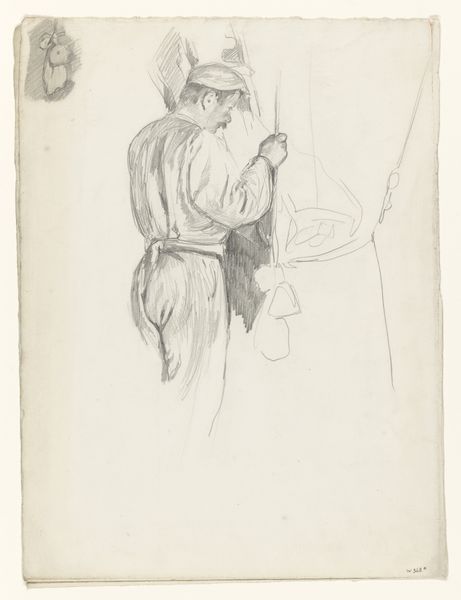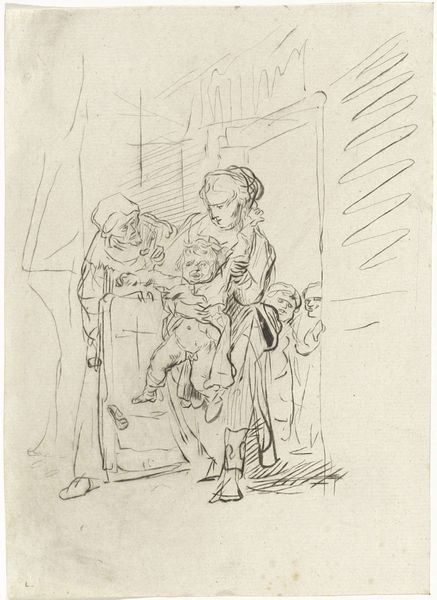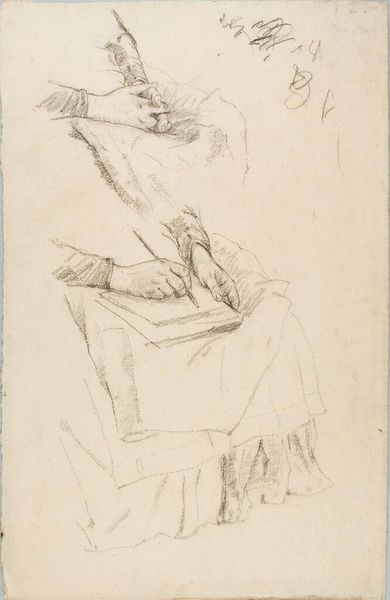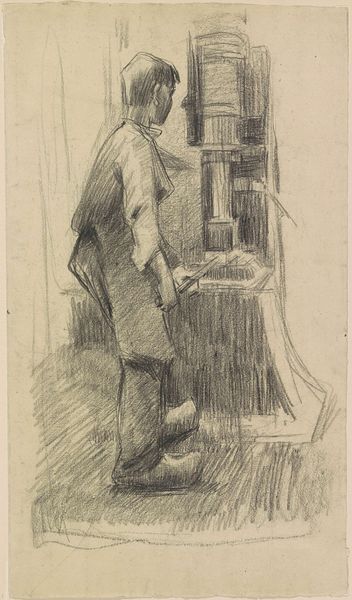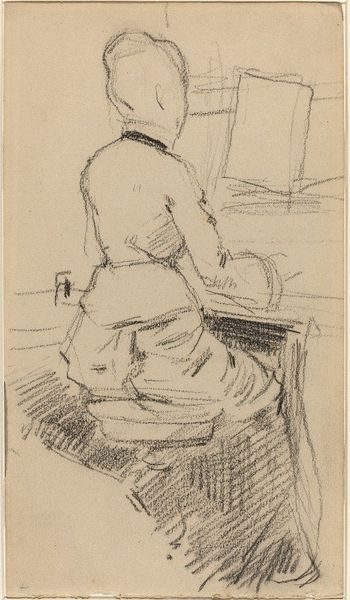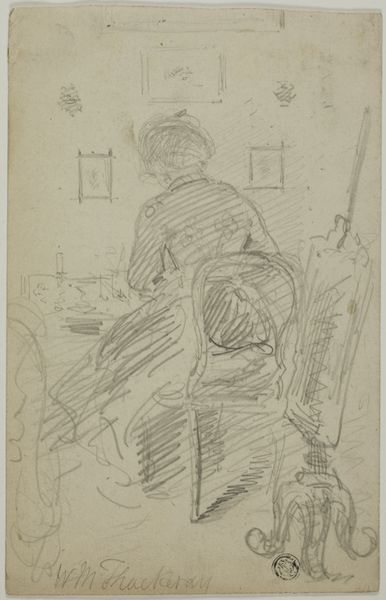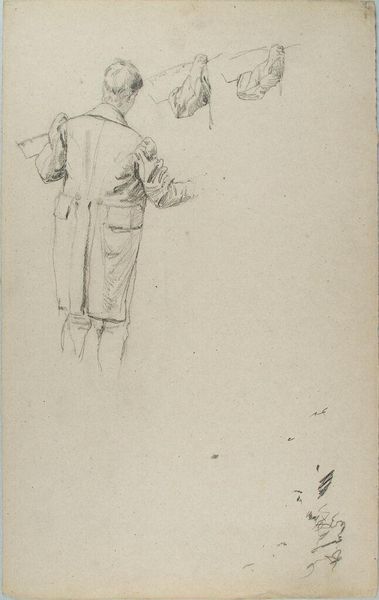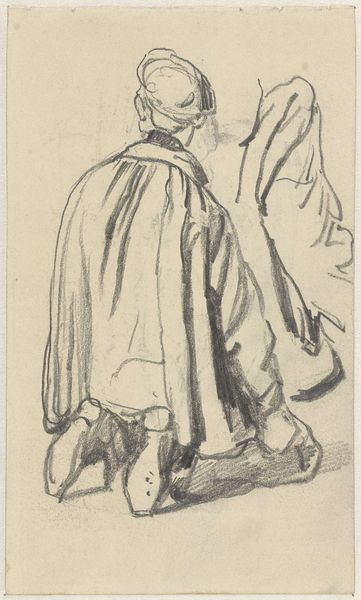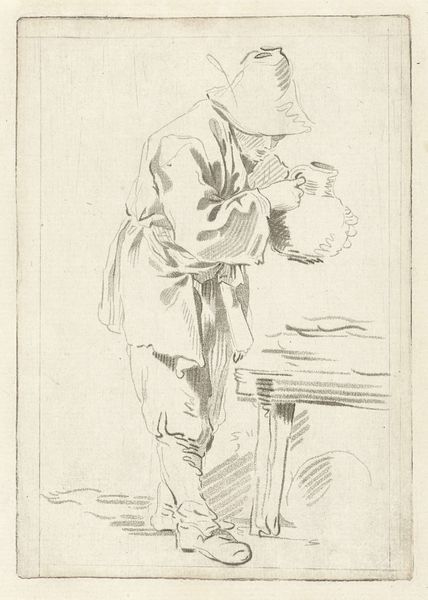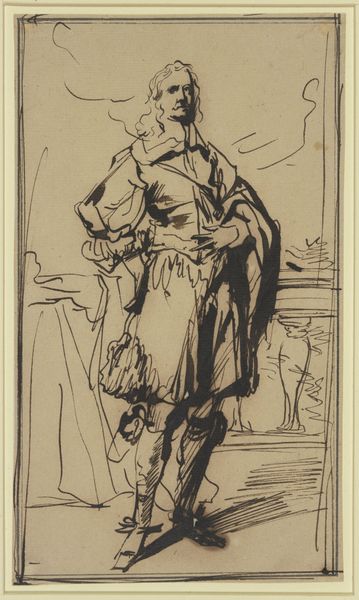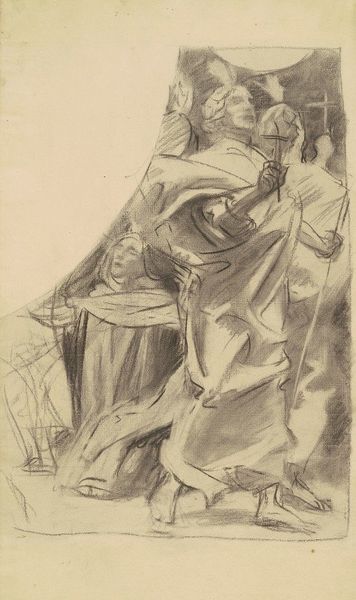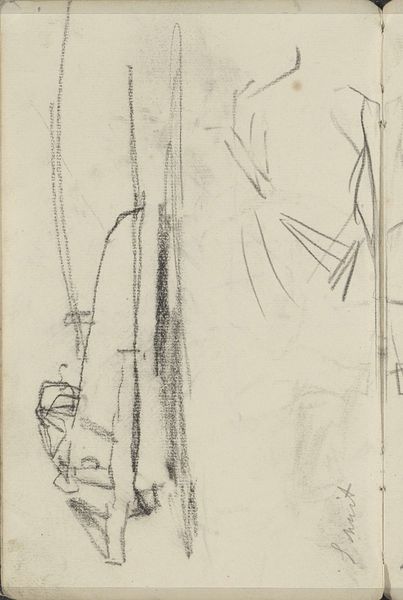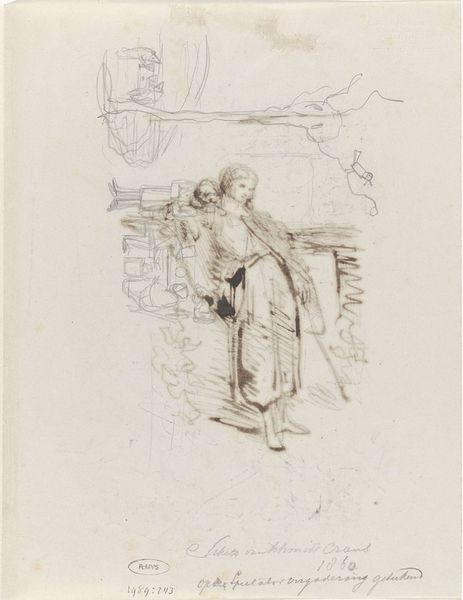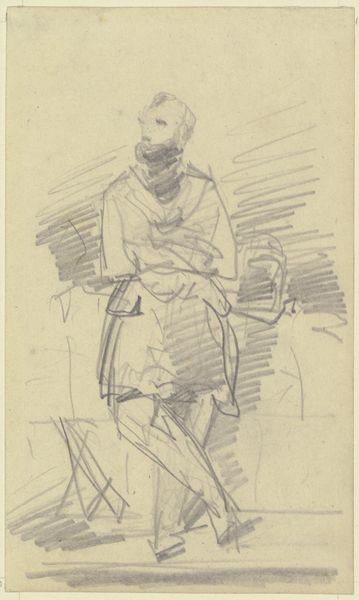
drawing, print, etching, pencil, engraving
#
portrait
#
drawing
# print
#
etching
#
pencil
#
genre-painting
#
engraving
#
realism
Dimensions: plate: 20.1 x 13.9 cm (7 15/16 x 5 1/2 in.) sheet: 28.1 x 21.2 cm (11 1/16 x 8 3/8 in.)
Copyright: National Gallery of Art: CC0 1.0
Editor: Here we have Robert Austin's "Mason of Canterbury," created in 1948 using etching, engraving, and pencil. It's a beautifully detailed scene; the close focus on the artisan's work creates a very intimate feeling. What stands out to you when you look at this print? Curator: The intricate details produced through etching and engraving compel me to examine the labor embodied within. The figure isn't idealized; we see the mason's posture, the tools of his trade. Consider the socio-economic context of post-war Britain in 1948. Austerity was still a reality. Do you think this focus on the working class resonated differently then? Editor: That's a great point. It seems like the print almost romanticizes the hard work and skill of the mason. I hadn’t considered how rationing and rebuilding efforts might shape that interpretation. Curator: Indeed. Look at the inclusion of everyday objects - the coat hanging, the tools scattered about. Austin draws attention to the materials – stone, wood, metal – and their transformation through labor. It’s not just the finished product, but the process of making that holds value. It begs us to question, does elevating the craft of a common profession democratize art itself? Editor: That’s fascinating. Thinking about it, by using such traditional fine art techniques like etching to depict such a blue-collar scene, he’s breaking down barriers between what's considered 'high' and 'low' art, giving value to the previously uncelebrated worker and their world. Curator: Exactly. We're asked to reconsider the aesthetic merit found not just in grand compositions but also in the meticulous process, and the human element involved in material production. Editor: This print makes me think about where things come from and appreciate the skill involved in the everyday. Curator: Precisely! It encourages us to think critically about art as a reflection of, and engagement with, the material conditions of life.
Comments
No comments
Be the first to comment and join the conversation on the ultimate creative platform.
